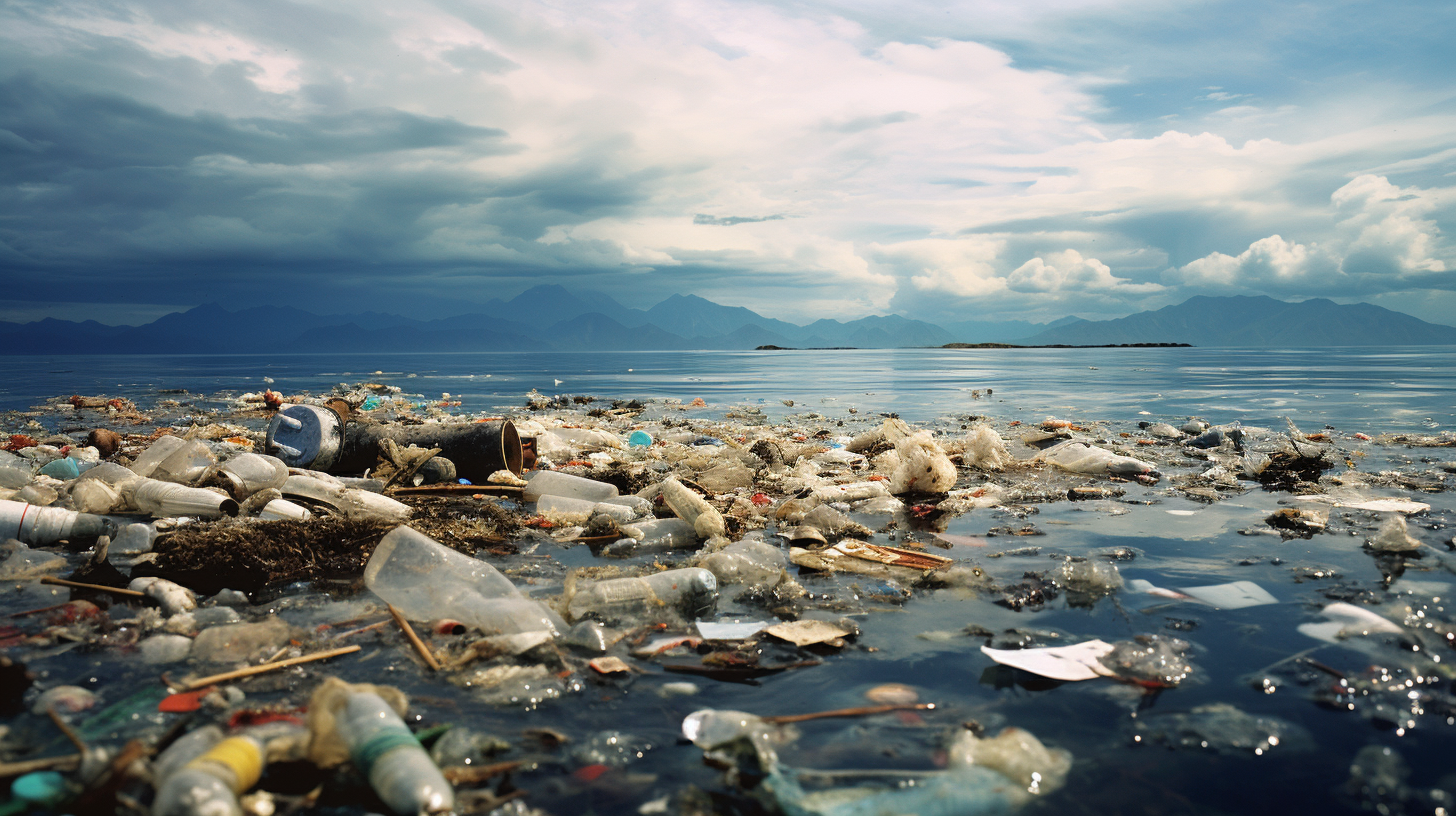Drifting through the once-blue expanse, the oily reflection of a forsaken sky looms above endless islands of misdeeds—Latin for trash, for refuse, for the relics of consumerism that have reshaped our oceans’ surfaces and depths into a tableau of decay. A week ago we discussed the relentless invasion of plastics in our oceans; today, we delve deeper into this dismal reality.
At the heart of this cataclysm lies the Great Pacific Garbage Patch, a swirling maelstrom twice the size of Texas, an unintended monument to mankind’s excess. Recent expeditions reveal the patch is growing, pulsing outward like some grotesque sea creature, ensnaring marine life in a death grip as unforgiving as the plastic that constructs it.
Scented with the stench of decomposition and slick with the sheen of chemical waste, our seas have become liquid landfills. Images emerge daily: turtles trapped in webbing, their shells morphing into grotesque shapes; seabirds festooned with multicolored plastic scraps, beaks agape in silent protest; fish bellies brimming with bottle caps rather than the brine of a natural diet.
Scientists, in their stark white coats stained with despair, recount tales of microplastics invading the flesh of marine denizens—and, in turn, the humans who dare consume them. ‘We are eating our trash,’ they lament. It’s an act of cannibalism on a planetary scale, an ouroboros of waste consuming itself, with no end in sight.
Our reliance on single-use plastics, once hailed as a convenience, has consequently devolved into a global crisis of unprecedented scale. With every passing second, the equivalent of a garbage truck’s worth of plastic bulldozes its way into our oceans, an unending siege that threatens to transform the very essence of what it means to be an ocean.
Amidst this calamity, efforts to reverse this tide seem as futile as bailing out a sinking ship with a thimble. Corporate pledges and individual promises to reduce plastic use are but a drop in this polluted ocean. The reciprocal nature of inaction and despair fosters a fatalistic outlook, where solutions appear as distant as the horizon to a drowning sailor.
Yet, the story must be told; a narrative must unfold. Environmental watchdogs and renegade activists still attempt to wave the red flags, the irony being there are too few fish left to see them. They preach of the long-term consequences, of the ecosystems’ collapse, of the oceans’ ultimate surrender to plastic conquest.
But who will wield the harpoon against this leviathan of garbage? While some valiantly trawl the seas seeking to skim off this superficial layer, the depths remain untouched, an abyssal plain smothered in waste where sunlight dares not visit.
In a display of morbid curiosity, society stands riveted as observers, not actors, in this tragedy. We consume with ravenous hunger: images of the garbage-strewn seas, of the marine life suffocating beneath our refuse. Yet we internalize little, our gaze fixated, our hands idle.
The ocean has long been human’s dumpster; the consequence is an ecosystem gasping for life, punctuated by islands of trash rather than biodiversity. To those who still harbor an ember of concern, we articulate this tale not to spur hope, for the hour is late, but to bear witness to the consequences of our collective negligence.
Amid the whirr of plastic shredders and the drone of despondent cetaceans, our legacy is clear. The Seas of Garbage are more than a metaphor—they are a reality, an ever-expanding exhibit of humanity’s footprint. As we question the salvation of our oceans, we must, in tandem, scrutinize the reflection in the murky waters—a portrait of us all.
